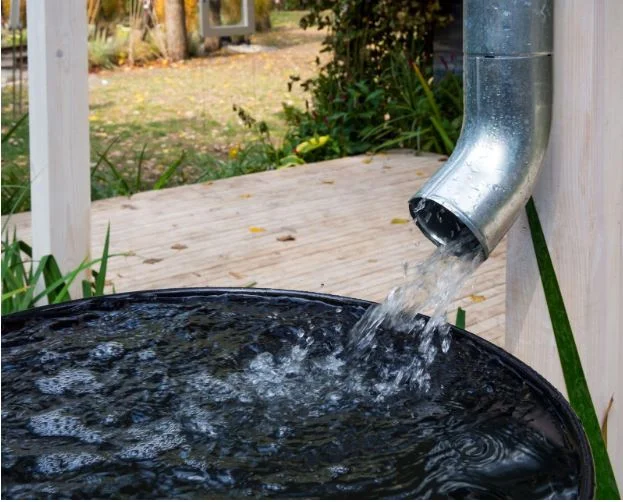Rainwater tanks have surged in popularity as households become more environmentally conscious and resource-efficient. These systems collect and store rainwater, promoting sustainability and offering a practical solution for reducing dependence on municipal water supplies. A rainwater tank can lead to reduced water bills, potable water conservation, and a smaller carbon footprint. This article will delve into the various aspects of selecting the right rainwater tank, covering your water requirements, different types of tanks, installation and maintenance, cost considerations, and choosing the right supplier.
Understanding Your Water Needs
To determine the best rainwater tank for your home, it is essential to understand your household’s water consumption. Calculating the average daily and annual water usage for activities such as drinking, cooking, bathing, and gardening will help in estimating the appropriate size of the tank. An awareness of the local climate and average rainfall is also crucial; knowing how much rain falls in your area will aid in determining the feasibility of rainwater harvesting.
Additionally, consider any future changes in your water needs. If contemplating a garden expansion or anticipating family growth, a larger tank might serve better long-term. Ultimately, it’s about striking a balance between your budget and water-saving objectives, considering both current and potential future needs.
Types of Rainwater Tanks
Rainwater tanks come in various materials, each with its own benefits and drawbacks. Polyethylene tanks are popular for their affordability and light weight, which makes installation easier. They are generally resistant to corrosion and offer a variety of sizes and colours. However, they might not be as durable as other materials over time.
Steel tanks, often galvanised, are known for their durability and strength. They can withstand harsh environmental conditions but may be more expensive than polyethylene. Concrete tanks are another durable choice, offering excellent protection against fire and extreme weather, although they can be more challenging and costly to install. Fiberglass tanks, though less common, offer advantages in areas prone to chemical exposure, as they are resistant to rust and corrosion.
When choosing a tank, consider space and site limitations. Underground tanks are ideal for properties with limited surface space, while aboveground tanks might be more accessible for maintenance. Aesthetic preferences also play a role, with some tanks offering more design flexibility to blend seamlessly with your home’s exterior.
Installation and Maintenance Considerations
Installing a rainwater tank involves several steps that may require specific permits or approvals from local authorities. Proper site preparation is crucial for ensuring the tank’s stability and longevity. Professional installation is often recommended to avoid future complications, such as leaks or improper alignment.
Maintenance is key to the efficient operation of a rainwater harvesting system. Common tasks include regular cleaning of the gutters and tank to prevent blockages, checking for leaks, and ensuring that all connections are secure. Regular inspections can prevent potential issues, such as algae growth or mosquito breeding, and preserve water quality.
Cost and Budget Considerations
When considering rainwater tanks, evaluating both the initial installation costs and long-term savings is important. Installation costs can vary based on the tank material, size, and system complexity. While larger or more sophisticated systems might demand a greater initial outlay, they can offer significant savings on water bills over time.
Many regions offer rebates and incentives for installing rainwater harvesting systems, easing the financial burden and promoting eco-friendly practices. It’s also helpful to explore different financing options, including payment plans and potential DIY installations to cut costs. While budgeting, consider the rainwater tank benefits, which include not only water and cost savings but also a positive environmental impact.
Choosing the Right Supplier
Selecting a reliable supplier is essential for obtaining a high-quality rainwater tank. When evaluating suppliers, consider asking key questions regarding their products and services. Inquire about the types of tanks available, delivery and installation services, and any maintenance support offered. It’s also wise to investigate product warranties and the company’s customer service reputation.
Quality assurance standards are vital to ensure the tank’s reliability and effectiveness. Reliable suppliers should adhere to industry standards and provide certifications or guarantees to back their products. It’s a smart strategy to compare quotes from different suppliers, considering not only the cost but also the product quality and service levels. This research will aid in making a well-informed decision and securing the right rainwater tank for your home.
Conclusion
In summary, selecting the perfect rainwater tank involves several critical considerations, from understanding your water needs to choosing the right tank material and supplier. By considering the size, installation, maintenance, and cost factors, homeowners can make informed decisions that benefit both the environment and their wallets. Embracing sustainable water management can lead to substantial environmental and economic advantages, offering an effective way to address water scarcity issues. As you plan your rainwater tank purchase, consider your long-term water requirements and contribute to a more sustainable future.
